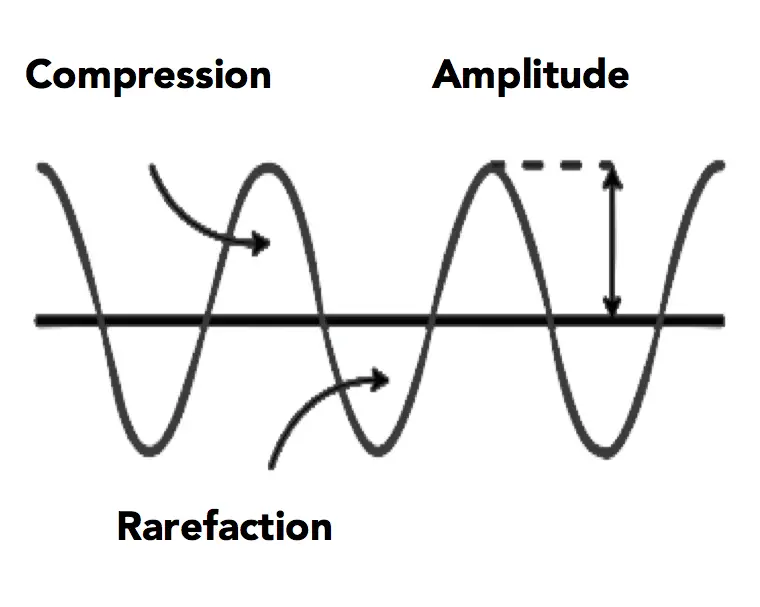Ever wondered why your acoustic guitar has that big hole in its body? This is the soundhole and it does a lot more than just swallow guitar picks. It is an essential function that facilitates how the guitar amplifies sound.
Why do acoustic guitars have a sound hole? Simply stated its purpose is to amplify the sound. The large hollow chamber aids vibration increases volume and facilitates resonance.
In this article, we will look at the sound hole of an acoustic guitar in more detail. so let us jump right in!
1. What Is A Sound Hole On Acoustic Guitars?
Every acoustic guitar is easily recognised by its sound hole. A sound hole (also known as a sound chamber) is a hollow chamber found on all acoustic guitars. They will always be located in a specific place invariably found under the strings on the body of a guitar. This is the same location where pickups are found on electric guitars. You can consider the sound hole as a resonating chamber that is a substitute for pickups.
2. Why Is The Acoustic Guitar Sound Hole Important?
Unlike electric guitars, acoustic guitars are not reliant on the need for pickups and electronics to help in creating their full-bodied sound. Generally, an acoustic uses the design of the guitar to amplify the sound. This means they rely on how the vibrational waves are formed within the body of the guitar. This in turn produces an amplified sound.
The location of the sound hole is paramount because it is the resonating chamber that allows for greater vibration from the guitar body (or more technically the soundboard as referred to the top of the sound hole). The sound hole then releases these vibrations, which would otherwise be trapped within the guitar.
3. How Does The Sound Hole Work?
Your guitar strings connect to the tuning pins on the saddle (this is where the strings connect to the bridge plate). Upon plucking a string, the vibrational energy causes the bridge plate to vibrate which facilitates the vibration of the top board (also known as the body). As the top board vibrates, it causes the air inside the guitar body to also vibrate. As the air vibrates, it will exit out from the sound hole under the strings.
The sound chamber causes the trapped air to vibrate at the same frequency as the strings. This is important to understand because the vibrating air trapped inside the body will resonate at the same frequency and produce an amplified sound in unison with the strings and simultaneously be released through the sound hole.
4. How Sound Is Created
Sound occurs when an object vibrates. In the case of a guitar, plucking the strings causes these vibrations. The energy from the vibrating strings transfers to the body which causes the molecules in the surrounding air to vibrate. It is this vibrating air that creates audible sound waves.
If there is no air, there is no sound because without air there are no molecules in the surrounding environment to vibrate. This also means sound cannot exist inside a vacuum as there is no air.
5. What makes a sound?

Sound waves contain high pressure areas and low pressure areas. The high pressure areas are called compressions whilst the low pressure areas are called rarefaction.
The height of the sound wave is also important. This is basically the amount of energy contained in each vibration and it is called the amplitude.
The amplitude is the amount of energy contained within and is a measure of the intensity of the sound wave. The higher the amplitude the higher the volume output will be. This is a reflection of how hard the string is plucked.
The amplitude is measured from the centre of the sound wave to the top of the sound wave (this is more technically known as the point of equilibrium).
6. How sound is Amplified From the Sound Hole
If you have ever listened to a song on your mobile phone and then placed it in a bowl you will notice the volume increases. Even though there is no additional energy introduced.
You get this affect because the sound waves emanate out in all directions, reflecting against the bowl. As the sound waves reflect against the bowl the air is released at the opening of the bowl. This means all the vibrating air is concentrated in one direction instead of being travelling in multiple directions. This concentration of vibrational energy coming from the top of the bowl increases the volume. You are not hearing a louder sound but rather a more direct sound, which appears louder.
This works the same way for acoustic guitars. When the string is plucked the sound waves are reflected from the underside of the soundboard. Just like the bowl, the opening of the sound hole provides the direction for the concentrated sound waves to travel. So again, you are not really hearing a louder sound, just a more direct sound that appears louder.
Why Some Guitars Have Different Size And Shape Sound Holes?
There are many types of sound hole designs for an acoustic guitar. Whilst some acoustic designs are more intricate than others are. While there is an obvious aesthetic appeal it is also true that each design can influence both tone and volume. This is because by altering the location and shape of the sound hole changes how the vibrations resonate.
- Large Round Hole – The most common sound hole feature a round hole positioned toward the front and centre of the soundboard.
- Multiple Smaller Holes – in the case of Godin guitars and Ovations such as the Ovation Elite, multiple, strategically placed smaller holes.
- F Hole – Another variation on the sound hole is the classic F hole, seen mostly on violins and semi-acoustic action guitars.
- Oval Hole – the oval hole is a common design coming from France. You will find the French jazz from the 1920 period will always feature this design with legendary players such as Jhango Rainhart.
If the sound hole is smaller then it will seem to produce less volume. This is why you see full acoustic design with big holes and the semi-acoustics (like the Godin arch tops) have smaller holes. This is because the electrics in a semi acoustic the volume is designed to boosted.
However, there are other factors to consider when evaluating the sound properties of a guitar. That is that sound doesn’t just resonate out of the sound hole (even though this helps amplify sound as discussed), but sound also comes out of the whole guitar its self as the whole guitar is vibrating when a string is plucked. This means the shape of the guitar along with the acoustic properties of the tone woods all help create the sound and volume that your guitar produces.
Conclusion
When you pluck a guitar string the vibrational energy is transferred from the strings to the soundboard (also known as body or top of the guitar) from the bridge. This energy vibrates al the air particles are reflected in the sound hole, whereby they are release in one direction That gives the appearance of an amplified sound.


Great information. It will help to buy a new one. But I am searching for guitar repair tips. I have bought an used guitar at less price. Guitar neck is broken, I have bought parts of a guitar neck. I don’t know how to fix this. I don’t have enough budget neither to buy a new guitar nor to hire any professional to repair the old guitar. So any suggestion or tips will be helpful for me.
Thank you for the information. I’m making my first cigar box guitar. I needed to know how the sound holes placement and size affects the the sound. Your internet article is just what i need and i greatly appreciate it.